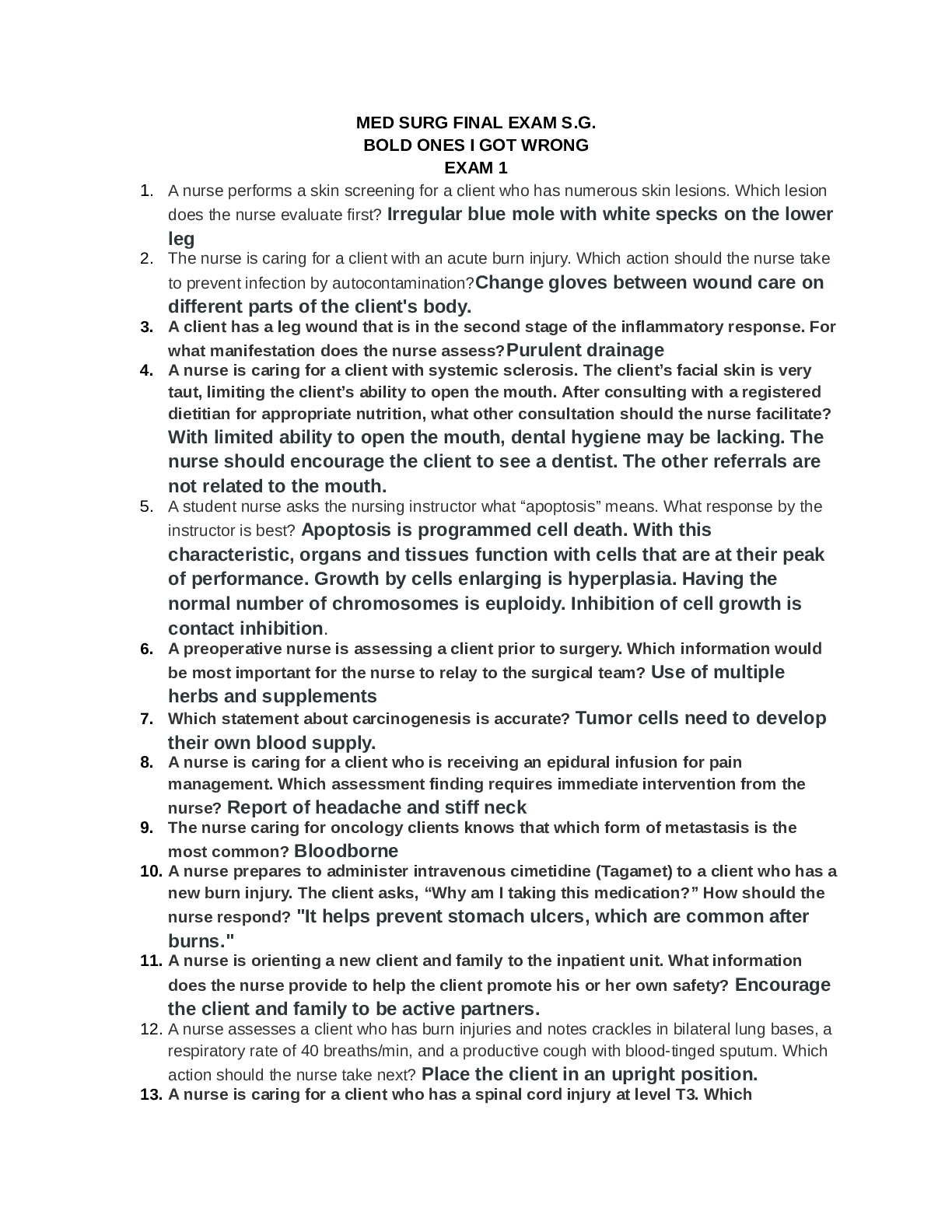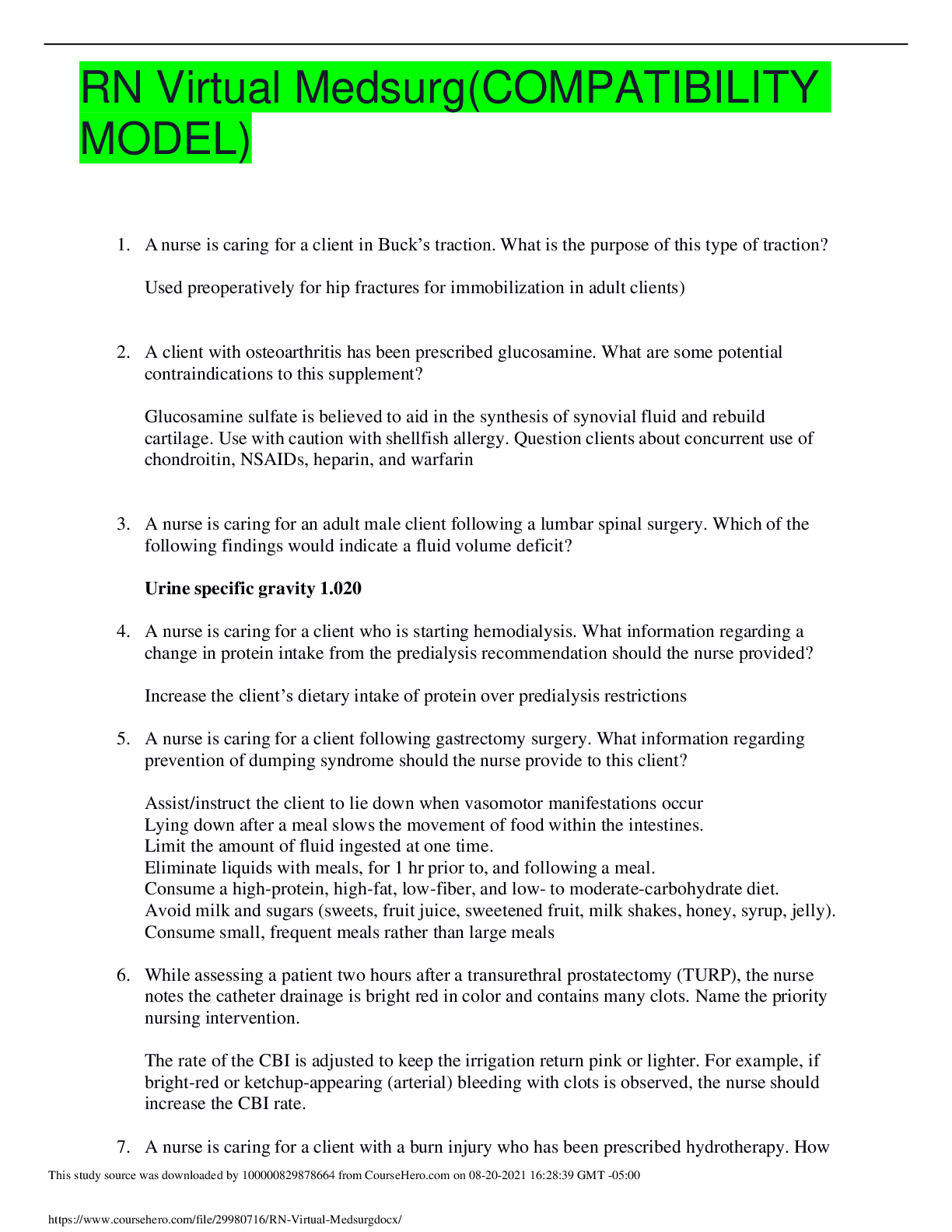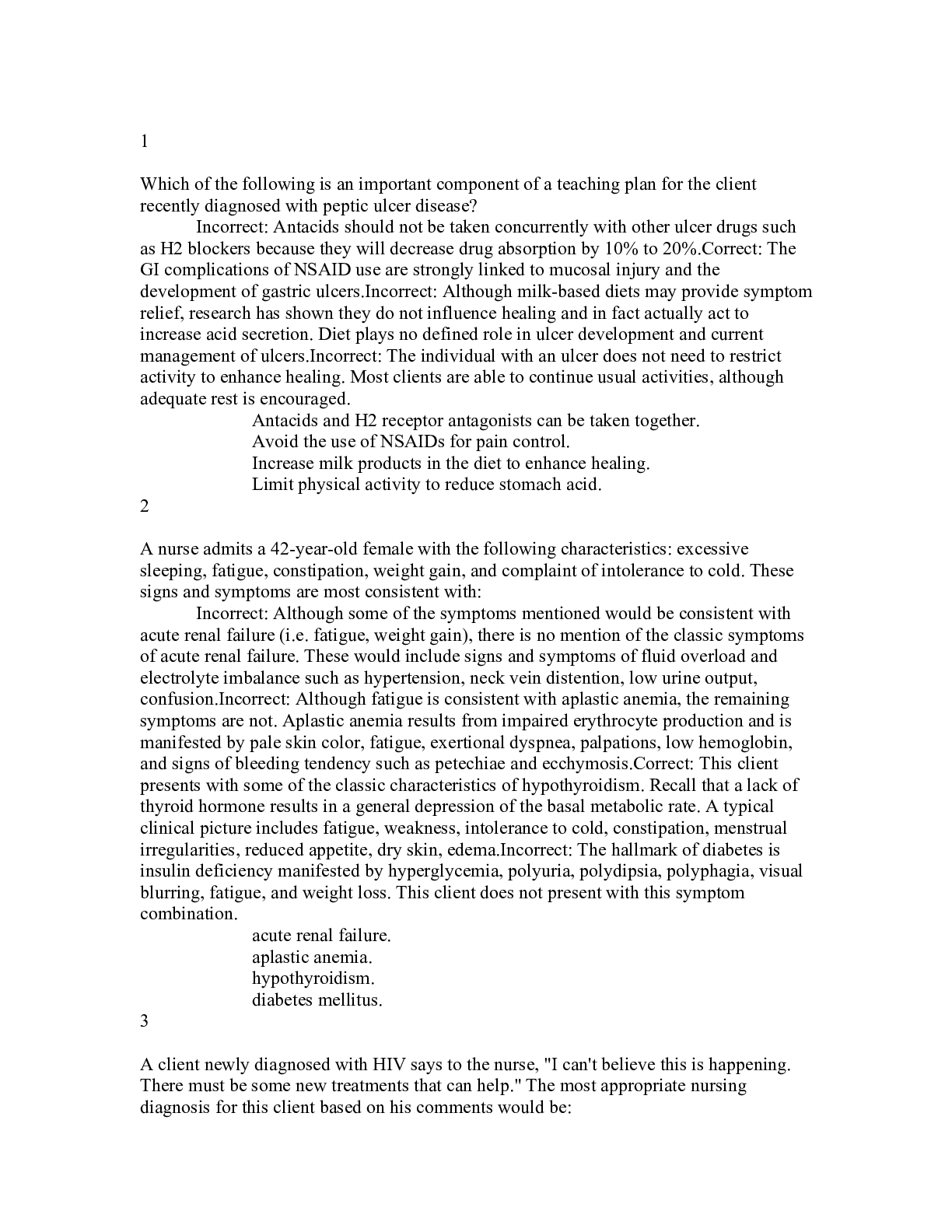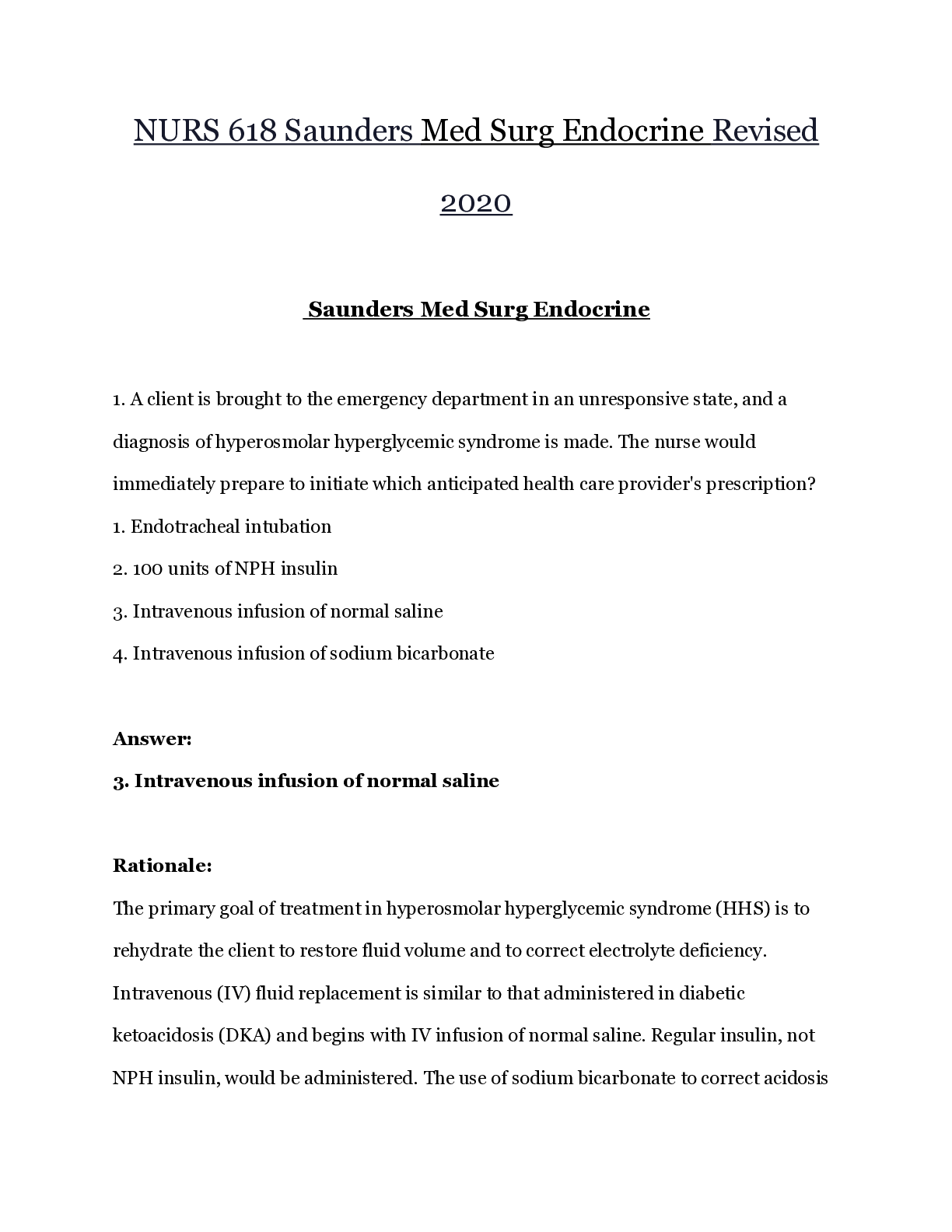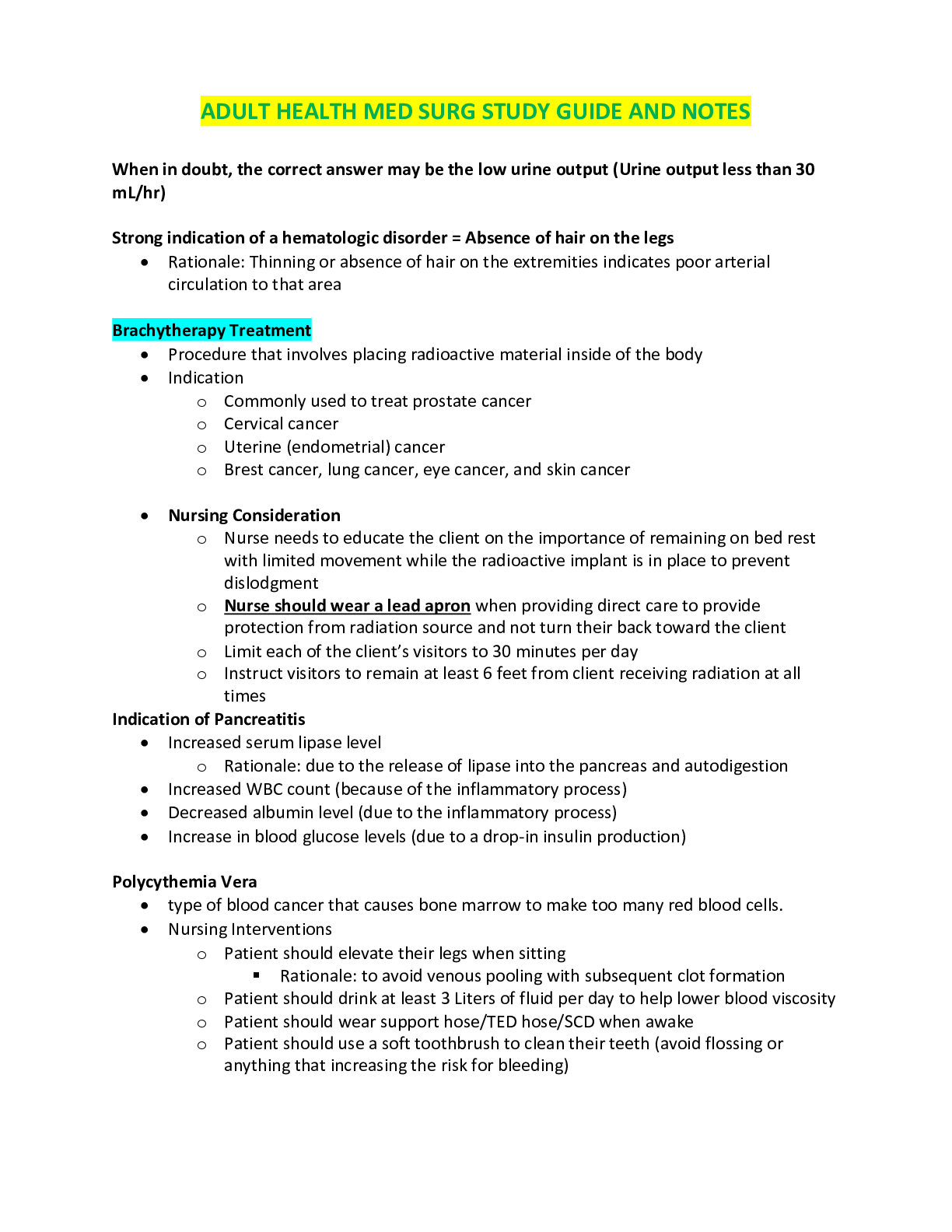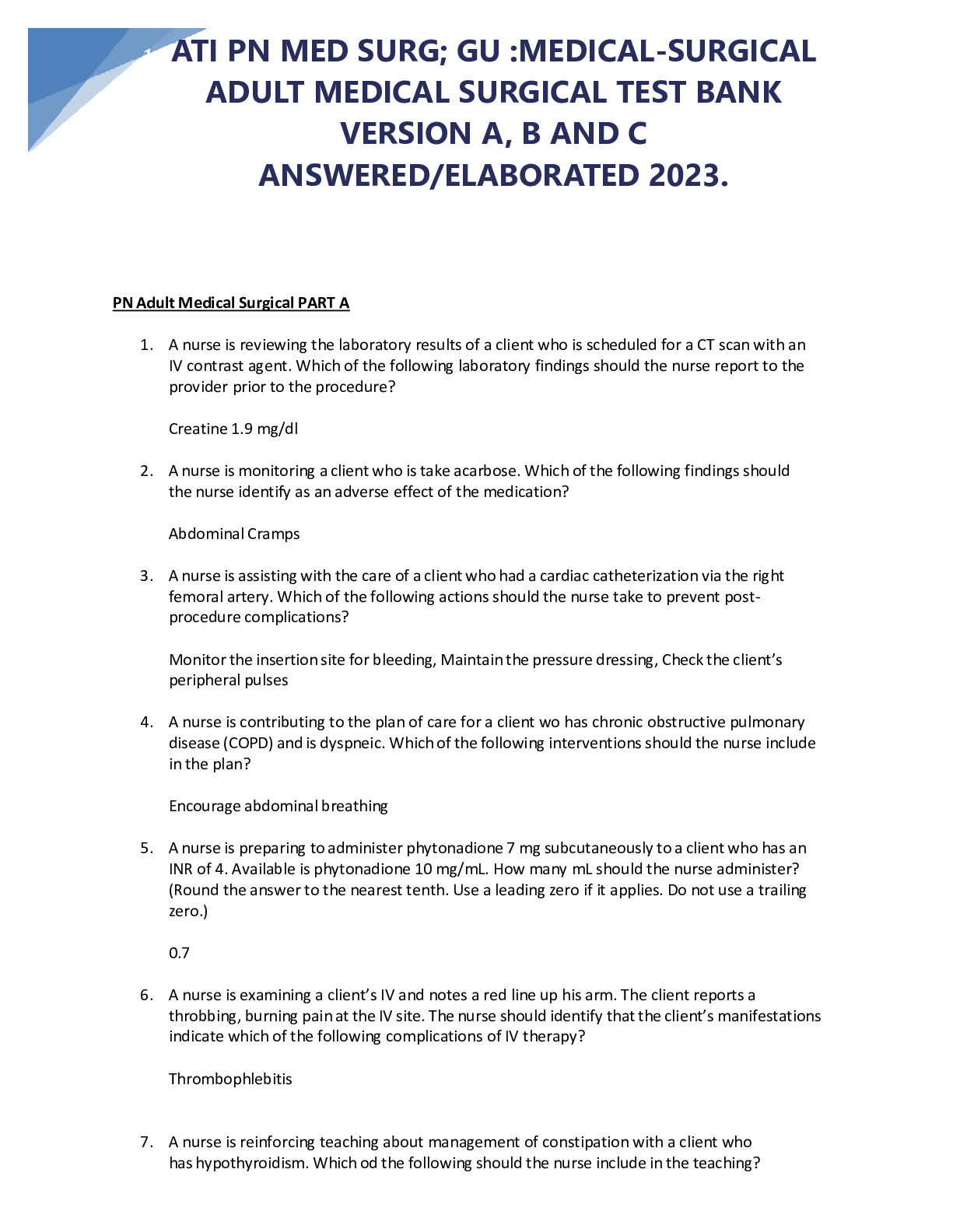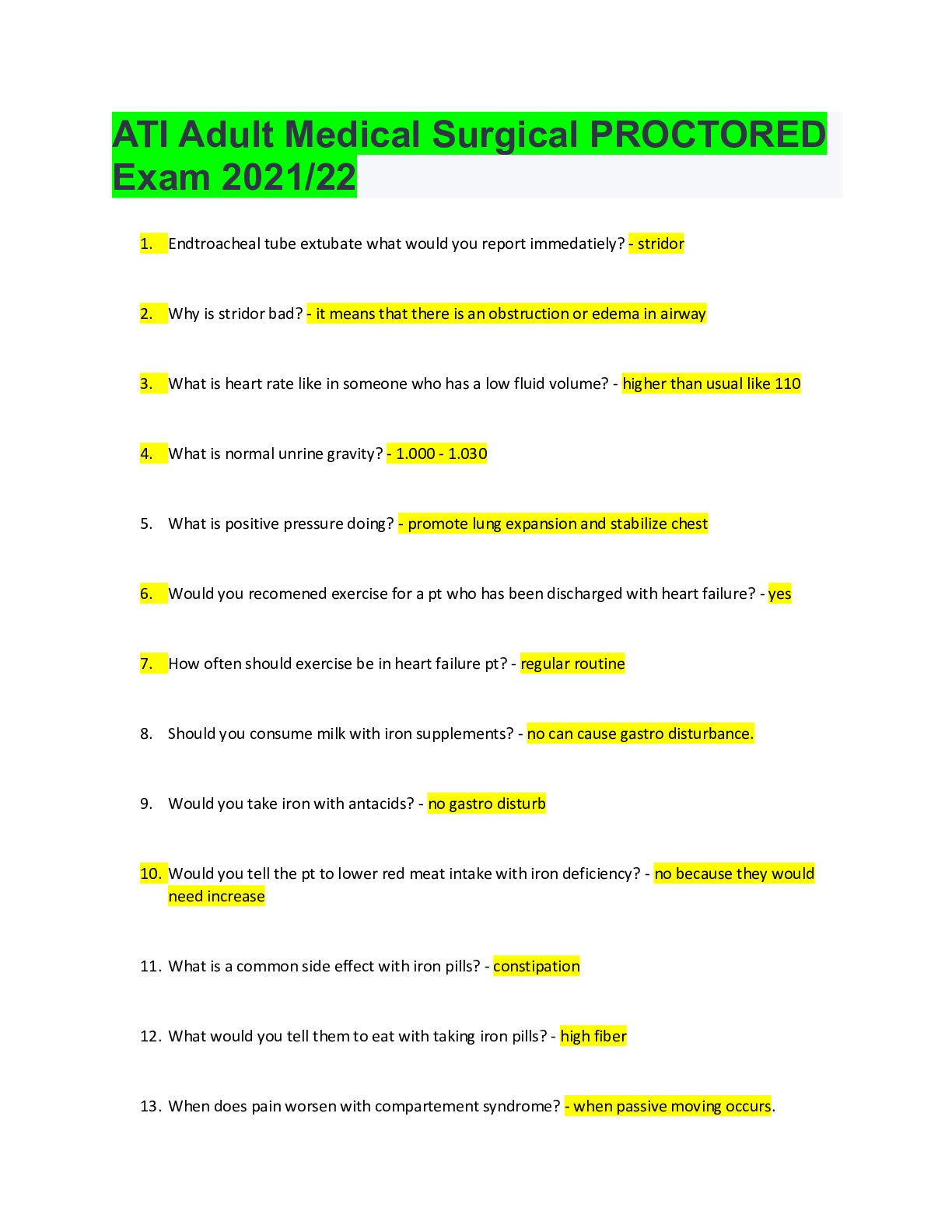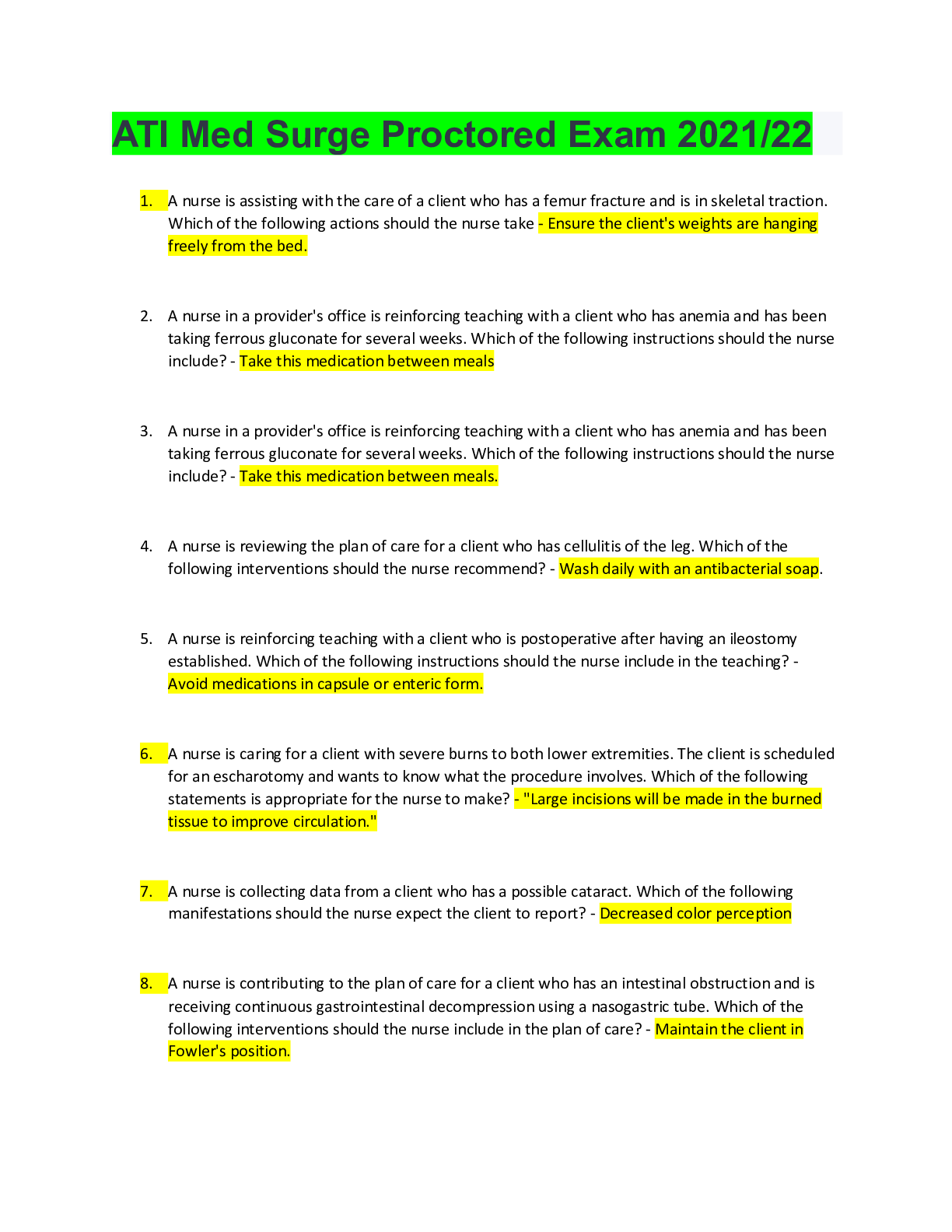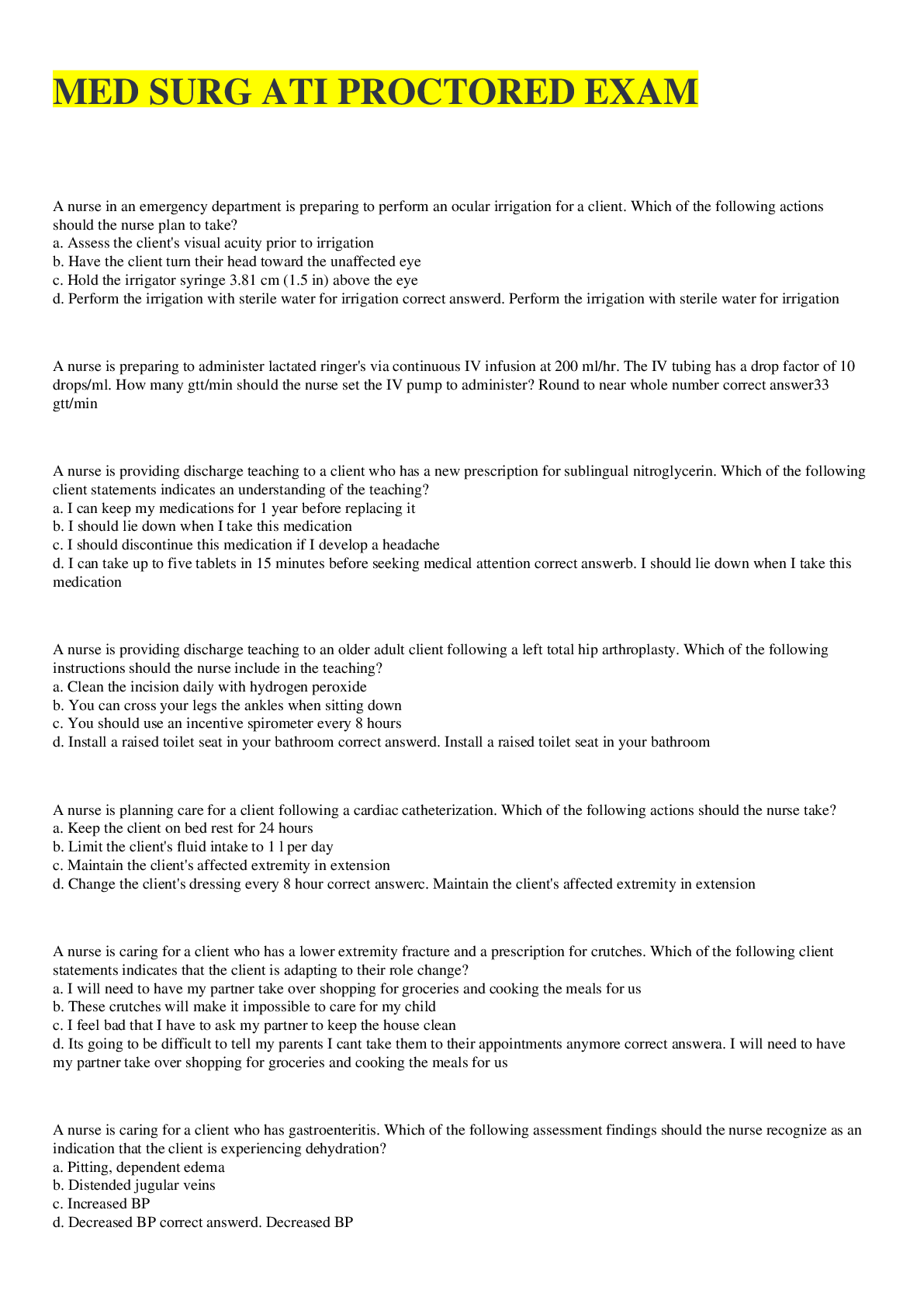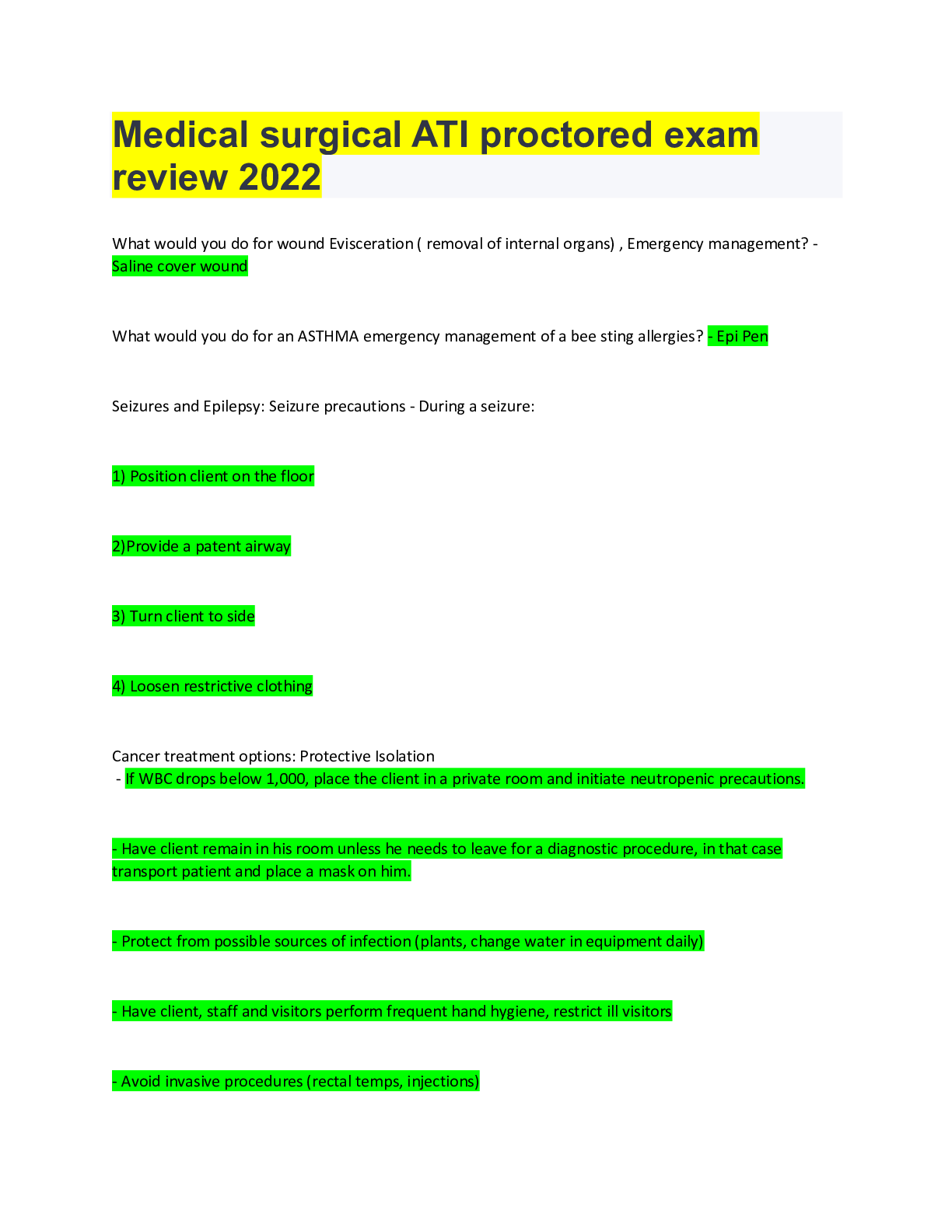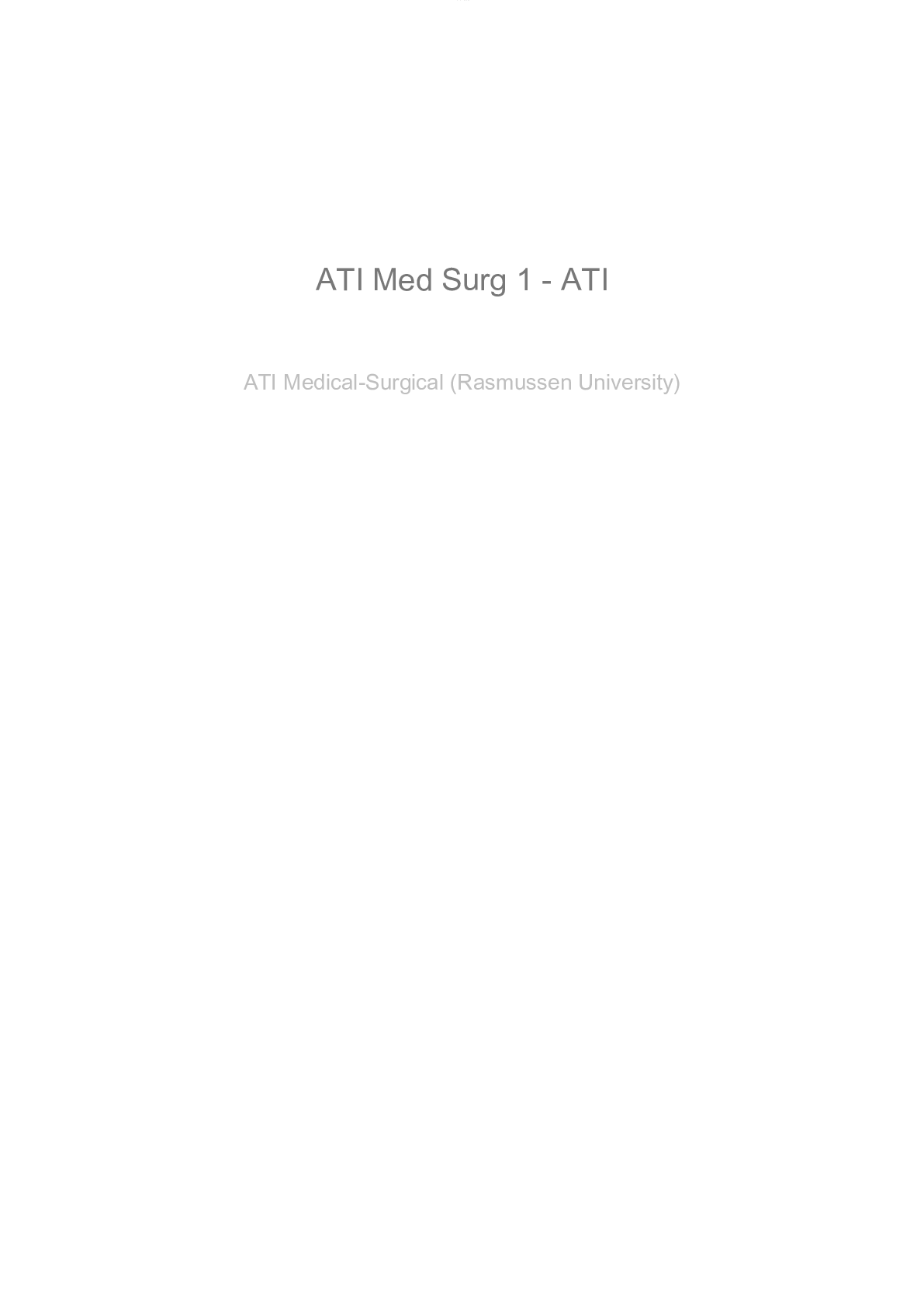*NURSING > MED-SURG EXAM > Med Surg Final Exam ATI Questions (All)
Med Surg Final Exam ATI Questions
Document Content and Description Below
Application Exercises 1. A nurse is caring for a client who displays signs of stage III Parkinson’s disease. Which of the following actions should the nurse include in the plan of care? A. Re... commend a community support group. B. Integrate a daily exercise routine. C. Provide a walker for ambulation. D. Perform ADLs for the client. 2. A nurse is developing a plan of care for the nutritional needs of a client who has stage IV Parkinson’s disease. Which actions should the nurse include in the plan of care? (Select all that apply.) A. Provide three large balanced meals daily. B. Record diet and fluid intake daily. C. Document weight every other week. D. Place the client in Fowler’s position to eat. E. Offer nutritional supplements between meals. 3. A nurse is reinforcing teaching with a client who has Parkinson’s disease and has a new prescription for bromocriptine. Which of the following instructions should the nurse include in the teaching? A. Rise slowly when standing. B. Expect urine to become dark-colored. C. Avoid foods containing tyramine. D. Report any skin discoloration. 4. A nurse is assessing a client for manifestations of Parkinson’s disease. Which of the following are expected findings? (Select all that apply.) A. Decreased vision B. Pill-rolling tremor of the fingers C. Shuffling gait D. Drooling E. Bilateral ankle edema F. Lack of facial expression 5. A nurse is caring for a client who has Parkinson’s disease and is starting to display bradykinesia. Which of the following is an appropriate action by the nurse? A. Teach the client to walk more quickly when ambulating. B. Complete passive range-of-motion exercises daily. C. Place the client on a low-protein, low-calorie diet. D. Give the client extra time to perform activities. RN ADULT MEDICAL SURGICAL NURSING CHAPTER 7 PARKINSON’S DISEASE 43 Application Exercises Key 1. A. The client/family should be involved in a community support group at the onset of the disease process to enhance coping mechanisms. B. The client should perform daily exercises with the onset of the disease process to promote mobility and independence for as long as possible. C. CORRECT: The client should use a walker for ambulation in stage III of Parkinson’s disease because movement slows down significantly and gait disturbances occur. D. The client loses ability to perform ADLs during stage V of Parkinson’s disease and is dependent on others for care at that time. During earlier stages, the client should be encouraged to remain as independent as possible. NCLEX® Connection: Safety and Infection Control, Accident/Error/Injury Prevention 2. A. The nurse should plan to provide small frequent meals during the day to maintain adequate nutrition. B. CORRECT: The nurse should record the client’s diet and fluid intake daily to assess for dietary needs and to maintain adequate nutrition and hydration. C. The nurse should document the client’s weight weekly to identify weight loss and intervene to maintain the client’s weight. D. The nurse should ensure that the client is sitting upright for meals rather than in a supported Fowler’s position, where the client’s head is elevated to 45 to 60°. E. CORRECT: The nurse should offer nutritional supplements between meals to maintain the client’s weight. NCLEX® Connection: Basic Care and Comfort, Nutrition and Oral Hydration 3. A. CORRECT: Orthostatic hypotension is a common adverse effect of bromocriptine, a dopamine receptor agonist. Therefore, rising slowly when standing up will decrease the risk of dizziness and lightheadedness. B. The client should expect urine to turn dark when taking entacapone, a COMT inhibitor. Dark urine is not an expected finding when taking bromocriptine. C. The client should avoid tyramine in the diet when taking selegiline, a monoamine type B inhibitor. However, bromocriptine does not interact with foods that contain tyramine. D. Skin discoloration is an adverse effect of amantadine, an anti-viral medication. However it is not an adverse effect of bromocriptine. NCLEX® Connection: Pharmacological and Parenteral Therapies, Adverse Effects/Contraindications/Side Effects/Interactions 4. A. Decreased vision is not an expected finding in a client who has PD. B. CORRECT: The client who has PD can manifest pill-rolling tremors of the fingers due to overstimulation of the basal ganglia by acetylcholine, making controlled movement difficult. C. CORRECT: The client who has PD can manifest shuffling gait because of overstimulation of the basal ganglia by acetylcholine, making controlled movement difficult. D. CORRECT: The client who has PD can manifest drooling because of overstimulation of the basal ganglia by acetylcholine, making the controlled movement of swallowing secretions difficult. E. Bilateral ankle edema is not an expected finding in a client who has PD, but can be an adverse effect of certain medications used for treatment. F. CORRECT: The client who has PD can manifest a lack of facial expressions due to overstimulation of the basal ganglia by acetylcholine, making controlled movement difficult. NCLEX® Connection: Physiological Adaptation, Pathophysiology 5. A. The client who has PD develops a propulsive gait and tends to walk increasingly rapidly. The client should be reminded to stop occasionally when walking to prevent a propulsive gait and decrease the risk for falls. B. The nurse should encourage active, not passive, range-of-motion exercises to promote mobility in the client who has PD and is displaying bradykinesia. C. The client who has PD often requires high-calorie, high-protein supplements between meals in order to maintain adequate weight. D. CORRECT: Bradykinesia is abnormally slowed movement and is seen in clients who have PD. The client should be given extra time to perform activities and should be encouraged to remain active. NCLEX® Connection: Reduction of Risk Potential, ...........................................................................................continued,........................................................................................................ [Show More]
Last updated: 1 year ago
Preview 1 out of 31 pages

Reviews( 0 )
Document information
Connected school, study & course
About the document
Uploaded On
Oct 26, 2021
Number of pages
31
Written in
Additional information
This document has been written for:
Uploaded
Oct 26, 2021
Downloads
0
Views
75

